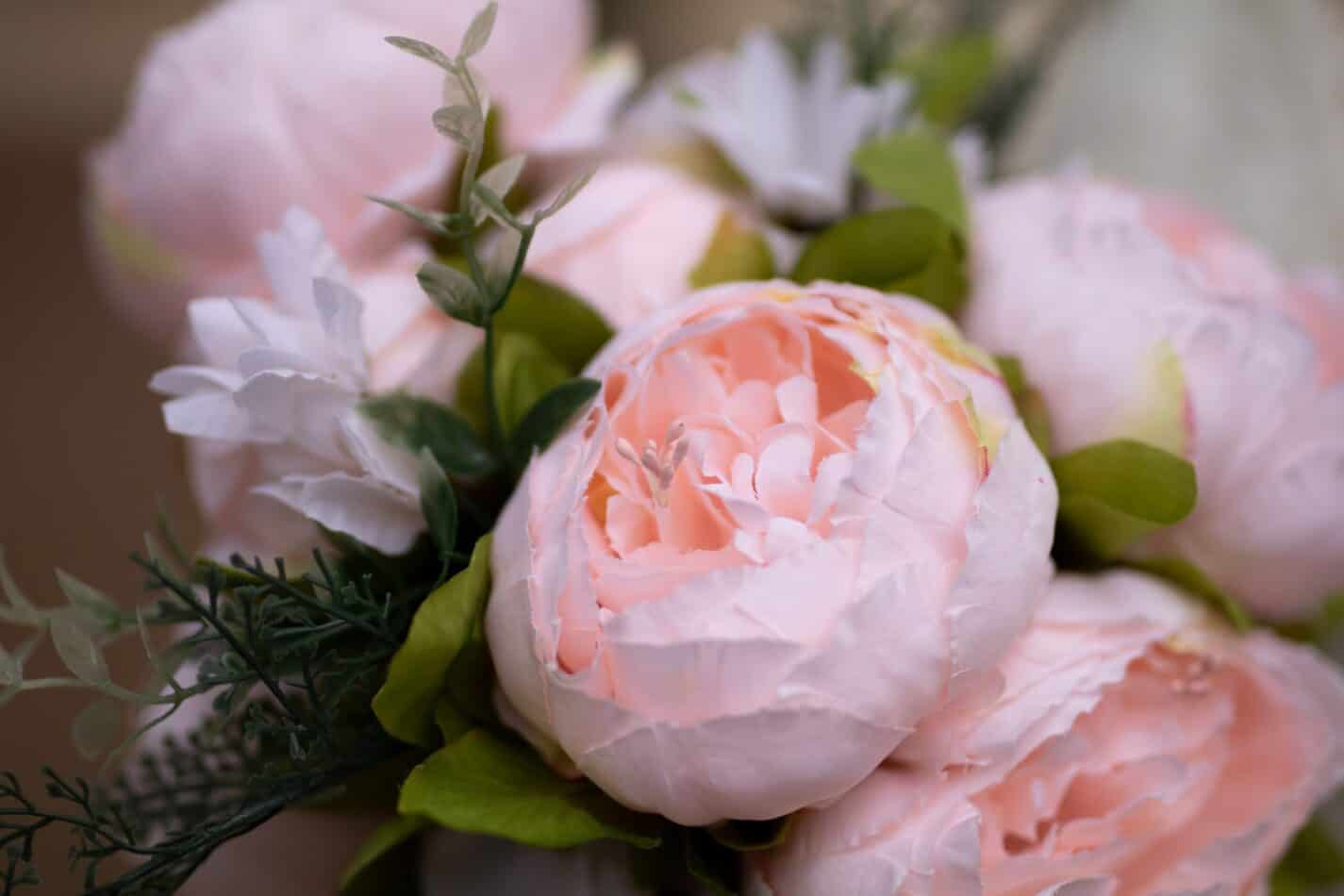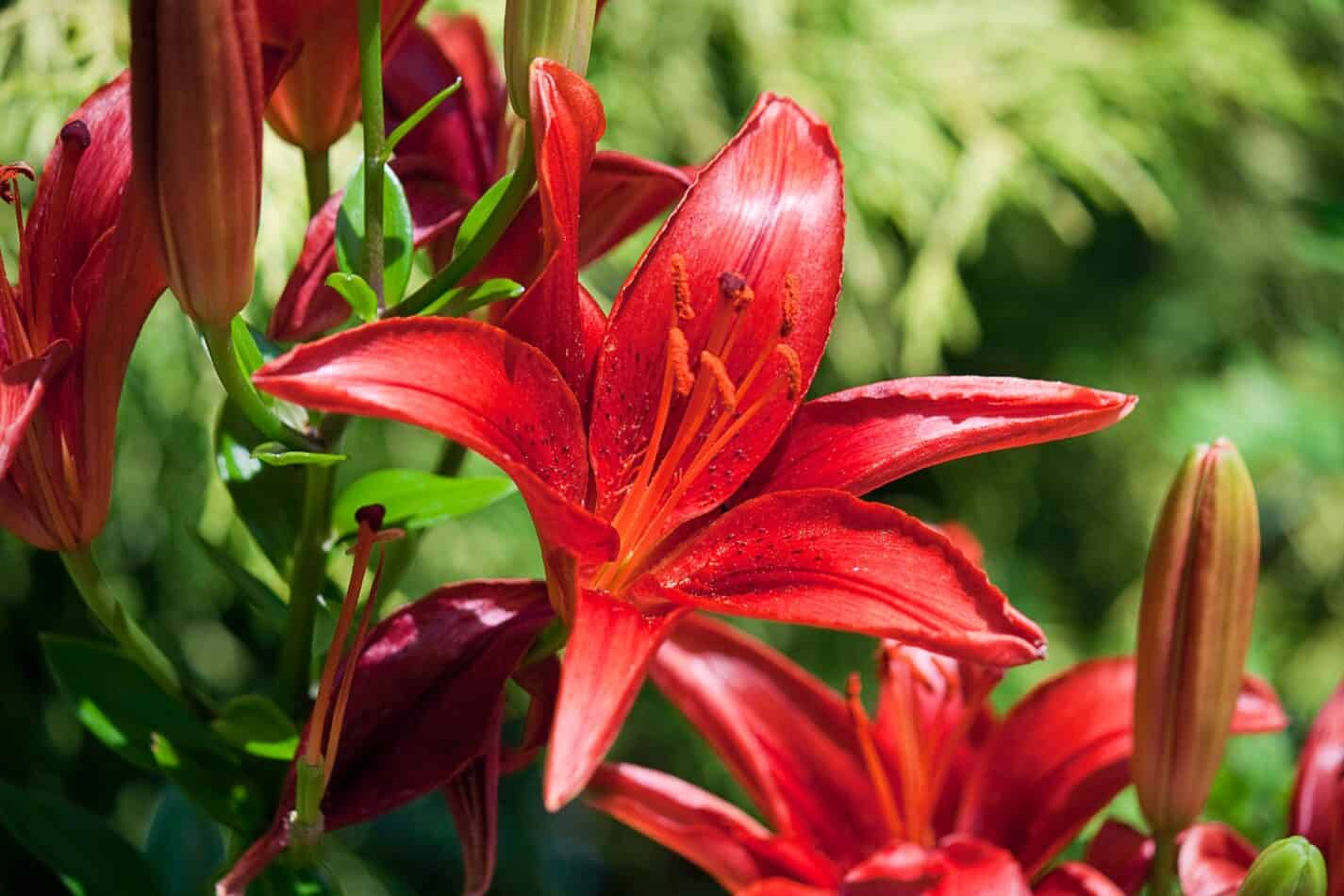The Chrysanthemum indicum, commonly referred to as “the garden mum,” is a showy flower that comes in various shapes and sizes. It is one of the most popular flowers worldwide and is used as a staple in bouquets. Newer RHS award-winning examples include “Ruby Mound” and “Grandchild.” Chrysanthemums are a versatile genus of many species and are perennials from the family Asteraceae. They’re uncomplicated, easy to grow, making them a favorite with gardeners of all skill levels.
How to Plant and Grow Chrysanthemum indicum
Chrysanthemum indicum, when grown correctly, are suitable as both an indoor and outdoor potted flower. They thrive in full sun, although in some warmer regions, shade during the midday may be beneficial. For best results, use only fresh soil and when planting, choose a container with drainage holes. Chrysanthemums prefer a soil with a neutral pH and a rich mix of composted manure or well-rotted leaf mold. A layer of mulch is beneficial at the base of the pot to help keep roots moist, especially during the warmer months.
Water regularly but do not overwater and fertilize potted mums every two weeks. They are not heavy feeders, so watch out for signs of overfeeding such as yellow and twisted leaves. When grown outdoors, mums should be planted in spring, after the last frost.
Meaning and Symbolism
The Chrysanthemum came to Europe from Asia and so associated with the Eastern notion of longevity. The name Chrysanthemum is derived from the Greek words “chrysos” and “anthemon” together meaning “golden flower”. The Chrysanthemum has been known in China since the 15th century BC and it was first used as an ornamental plant in Japan in the 8th century. Some Chinese legends state the Chrysanthemum is a symbol of the earth, while according to another legend the empress Xi Ling-Shi discovered tea and rested under a chrysanthemum bush–the flower is then associated with tea-drinking. The Chrysanthemum has become a national flower of Japan, and is symbolically used to honor the emperor.
In many parts of the world, Chrysanthemums are associated with joy and longevity, including in Australia and the United States, and with truth in France. As a flower, it symbolizes innocence, cheerfulness, trust, and joy. It is also the official flower of November in the United States, and symbolizes the beginning of winter and the end of the fall season.
History, Mythology, and Religious Significance
Through the ages, Chrysanthemums have been closely associated with mythology, religion, and folklore. In popular culture, Japan has long used the symbolism of the Chrysanthemum in a number of ways. Many Japanese consider it their national flower, while the Chinese associate it with longevity and modern-day nobility. In the West, the flowers can denote death, but this is a negative association and not one that is accepted as widely as in other parts of the world.
In Christianity, the flower is typically viewed as a symbol of joy, with some religious figures associated Chrysanthemums with the purest form of love. In Buddhism, the flower symbolizes honor, dignity, and victory. In some parts of the world, the color of the flower is said to hold the power to ward off evil and bring prosperity to those that carry it. Above all else, the Chrysanthemum will always be seen as a flower of joy, good luck, love, and happiness.
Flower Varieties and Their Defining Characteristics
Chrysanthemums come in a variety of shapes, sizes and colors, and the defining characteristics of each variety can vary significantly. The most common types of Chrysanthemums are listed below:
- Single – Single-stemmed blooms with a large central disk flower and one or more single rows of petals.
- Spoon – Spoon-shaped blooms with an outer layer of petals that form a cuplike shape.
- Decorative – Decorative flowers are full and large bloomed with multiple whorls of petals generally comprised of around 20 petals each.
- Cushion – Small compact flowers with a flattened center and five or more petal whorls.
- Quill – Large-petalled Chrysanthemums with quill-like petal points.
- Spider – Thin-petalled flowers that have a long and curvy center.
- Anemone – Flowers with a center disk without petals and outer petals arranged in ridges.
- incurve – Encircling petals that curl inward to form a cup or ball.
- Reflex – Petals that curl outward to form a bowl-shaped flower.
Chrysanthemums are popularly available in white, yellow, pink, purple and red color options. In addition to being used as a decorative element for flower arrangements, Chrysanthemums can also be used for culinary uses such as garnish and flavoring for soups.
How to Pot and Repot Chrysanthemums
It is important to repot your Chrysanthemum at least once a year to allow for easy growth and multiplication. The best time for this is spring when the flower is just beginning to bloom. Select a pot with good drainage and a basic potting mix that is loose and airy with a neutral pH of 6.5-7.5. Fill some of the soil in first, then place your plant in the pot and fill the remaining space with soil.
Water the potted Chrysanthemum immediately but not too often; too much water can damage the roots. A water soluble fertiliser at half the recommended strength can be given every 2-3 weeks. To reduce the spread and reach of the Chrysanthemum, prune the stems after flowering and deadhead the flowers when they start to die off.
How to Prune
Pruning Chrysanthemums is essential to prevent them from becoming leggy, top-heavy, and overgrown. Pruning also helps encourage a healthier plant and produce an abundance of beautiful blooms. As a general rule, pruning should begin in the late winter when the plants are still dormant, and then be repeated throughout the spring and summer months.
When pruning, it’s important to make sure that only the affected stems and branches are removed. Start by cutting off any dead or dying branches at the base of the plant, then trim off any stems that are growing too long or too dense. Once the desired shape and size is achieved, the pruning can be completed.
How to Propagate
Propagating Chrysanthemums is relatively simple and can be done by taking cuttings from an existing parent plant. The ideal time to take cuttings is in the early spring when the parent plant is beginning to flower. Make sure to take cuttings from healthy stems and use a knife or sharp scissors to cut each stem 1-2 inches above a set of healthy leaves. Remove the lower leaves and dip the stem in a rooting hormone to increase the rooting success.
Insert the stem into the potting mix so that only the leaves are visible. Water the soil and cover the pot with a plastic bag (a glass or jar will also work) to create a humid environment and promote rooting. In 4-6 weeks, the cuttings should have formed young roots. Once the Chrysanthemum’s roots are established, it is ready to be removed from the cutting and repotted.
Common Pests and Diseases
Chrysanthemums, just like other plants, are susceptible to both pests and diseases. Common pests for mums include aphids, whitefly, and spider mites, which can cause yellowing of leaves and stunted growth. The best way to keep pests away from Chrysanthemums is to check the plant regularly for any signs of infestation and apply pesticide when necessary.
In addition, there are several fungal and bacterial diseases which can affect Chrysanthemums. Leaf spot, powdery mildew, and crown rot are some of the most common diseases. To prevent these diseases, it’s important to provide optimal growing conditions, such as proper drainage and well-draining soil. It is also important to always water the flower at the base to avoid wetting the foliage.
Three Frequently Asked Questions About Chrysanthemum Indicum
Q: How long do Chrysanthemums last?
A: A Chrysanthemum can be expected to last approximately 1-3 weeks when kept in a cool and well-lit environment, such as a windowsill.
Q: How often should I water my Chrysanthemum?
A: Chrysanthemums require regular watering, but it is important not to over-water the plant and avoid wetting the foliage. Water your Chrysanthemum at least once a week and allow the soil to dry in between watering.
Q: How do I care for my Chrysanthemum during the wintertime?
A: When the temperature starts to drop and the days become shorter, your Chrysanthemum will likely slow down in growth and bloom less. To prepare for the winter, it’s important to move the plant indoors or to a sheltered location and reduce watering frequency.
Fact Sheet
| Name | Chrysanthemum indicum |
| Family | Asteraceae |
| Plant Type | Perennial |
| Mature Size | 1-2 feet tall and 1-2 feet wide |
| Sun Exposure | Full sun |
| Soil Type | Well-draining, neutral pH soil |
| Soil pH | 6.5-7.5 |
| Bloom Time | Early summer to early fall |
| Flower Color | White, yellow, pink, purple and red |
| Hardiness Zones | 4-9 |
| Native Area | China, Japan |
What we love from Amazon this week
Buy these wonderful flowers directly from Amazon:















